Bubble Size and Bubble Concentration of a Microbubble Pump with Respect to Operating Conditions
Abstract
1. Introduction
2. Experimental Setup
2.1. Microbubble Pump
2.2. Experimetal Apparatus and Method
3. Result and Discussion
3.1. Performance Curve of Test Microbubble Pump
3.2. Bubble Size and Distribution
3.3. Effect of Intake Air Flowrate on Pump Performance
3.4. Relationship between Microbubble Generation and Dissolved Oxygen
3.5. Correlation between Microbubble Diameter and Terminal Rise Velocity
4. Conclusions
- (1)
- Microbubble pumps with a regenerative impeller induce higher pressure differences from the inlet to the outlet and local recirculation flow at each blade passage. Considering the microbubble generation by mixing the water and suction air at the blade passage with the rotation of the impeller, optimal pump pressure is important to generate a higher concentration of microbubbles. It is noted that the amount of air suction is also an important factor for optimal bubble generation.
- (2)
- Among the three different pump pressures, the bubble concentration of the test microbubble pump is highest when the pump pressure is 5 bar. The highest bubble concentration is distributed between the 20 and 30 micrometer bubble diameters, while the air flowrate ratio (Ra) is 4.0 percent.
- (3)
- In the condition of higher bubble concentrations, it can be seen that pressure and efficiency of the microbubble pump have a similar tendency, regardless of the air supply. In the present pump, the maximum difference of the pump efficiency is less than 1.2 percent. So, the performance differences of the microbubble pump can be neglected, depending on the air flowrate ratio.
- (4)
- Throughout the measurement of the dissolved oxygen concentration during microbubble generation, the tendency of the amount of oxygen dissolved to change with respect to time is the same as the generated amount of microbubbles. It is noted that the time variation of the oxygen concentration and the concentration of microbubbles have a close relationship from generation to extinction.
- (5)
- Using a theoretical comparison of the terminal rise velocity with respect to the bubble size derived by Hadamard and Rybczynski, the microbubble diameters obtained from present measurements show a similar tendency to the theoretical formula.
Author Contributions
Funding
Conflicts of Interest
Nomenclature
| concentration of microbubbles | |
| diameter of microbubble | |
| gravitational acceleration | |
| radius of microbubble | |
| cross-sectional area of side channel of microbubble pump | |
| pressure rise between inlet and outlet of microbubble pump | |
| volumetric flowrate of water | |
| Ra | air flowrate ratio |
| torque acting on rotational axis of microbubble pump impeller | |
| rotational velocity of microbubble pump impeller | |
| terminal rise velocity | |
| Greek Letters | |
| machinical efficiency of microbubble pump | |
| viscosity of water | |
| internal viscosity of air | |
| difference in density between air and water | |
| density of water | |
| flow coefficient | |
| pressure coefficient | |
| angular velocity of microbubble pump impeller |
References
- Khuntia, S.; Majumder, S.K.; Ghosh, P. Microbubble-aided water and wastewater purification: A review. Rev. Chem. Eng. 2012, 28, 191–221. [Google Scholar] [CrossRef]
- Takahashi, M. Effect of shrinking microbubble on gas hydrate formation. J. Phys. Chem. B 2003, 107, 2171–2173. [Google Scholar] [CrossRef]
- Takahashi, M. Potential of Microbubbles in Aqueous Solutions: Electrical Properties of the Gas-Water Interface. J. Phys. Chem. B 2005, 109, 21858–21864. [Google Scholar] [CrossRef] [PubMed]
- Agarwal, A.; Ng, W.J.; Liu, Y. Principle and application of microbubble and nanobubble technology for water treatment. Chemosphere 2011, 84, 1175–1180. [Google Scholar] [CrossRef] [PubMed]
- Kim, H.S.; Lim, J.Y.; Park, S.Y.; Kim, H.J. Effects on swirling chamber and breaker d3isk in pressurized-dissolution type micro-bubble generator. KSCE J. Civ. Eng. 2017, 21, 1102–1106. [Google Scholar] [CrossRef]
- Takahashi, M. Base and technological application of micro-bubble and nanobubble. Mater. Integration 2009, 22, 2–19. [Google Scholar]
- Ikeura, H.; Kobayashi, F.; Tamaki, M. Removal of residual pesticide, fenitrothion, in vegetables by using ozone microbubbles generated by different methods. J. Food Eng. 2011, 103, 345–349. [Google Scholar] [CrossRef]
- Yoshida, A.; Takahashi, O.; Ishii, Y.; Sekimoto, Y.; Kurata, Y. Water purification using the adsorption characteristics of microbubbles. Jpn. J. Appl. Phys. 2008, 47, 6574–6577. [Google Scholar] [CrossRef]
- Yin, J.; Li, J.; Li, H.; Liu, W.; Wang, D. Experimental study on the bubble generation characteristics for an venturi type bubble generator. Int. J. Heat Mass Transf. 2015, 91, 218–224. [Google Scholar] [CrossRef]
- Uesawa, S.; Kaneko, A.; Nomura, Y.; Abe, Y. Study on bubble Beakup behavior in a venturi tube. Multiphane Sci. Technol. 2012, 24, 257–277. [Google Scholar] [CrossRef]
- Gordiychuk, A.; Svanera, M.; Benini, S.; Poesio, P. Size distribution and Sauter mean diameter of micro bubbles for a Venturi type bubble generator. Exp. Therm. Fluid Sci. 2016, 70, 51–60. [Google Scholar] [CrossRef]
- Zhao, L.; Mo, Z.; Sun, L.; Xie, G.; Liu, H.; Du, M.; Tang, J. A visualized study of the motion of individual bubbles in a venture-type bubble generator. Prog. Nuclear Energy 2017, 97, 74–89. [Google Scholar] [CrossRef]
- Rodríguez-Rodríguez, J.; Sevilla, A.; Martínez-Bazán, C.; Gordillo, J.M. Generation of Microbubbles with Applications to Industry and Medicine. Ann. Rev. Fluid Mech. 2015, 47, 405–429. [Google Scholar] [CrossRef]
- Nesbitt, B. Handbook of Pumps and Pumping; Elsevier: London, UK, 2005. [Google Scholar]
- Karlsen-Davies, N.D.; Aggidis, G.A. Regenerative liquid ring pumps review and advances on design and performance. Appl. Energy 2016, 164, 815–825. [Google Scholar] [CrossRef]
- Quail, F.J.; Scanlon, T.; Baumgartner, A. Design study of a regenerative pump using one-dimensional three-dimensional numerical techniques. Eur. J. Mech. B/Fluids 2012, 31, 181–187. [Google Scholar] [CrossRef]
- Jeon, S.Y.; Kim, C.K.; Lee, S.M.; Yoon, J.Y.; Jang, C.M. Performance enhancement of a pump impeller using optimal design method. J. Them. Sci. 2017, 26, 119–124. [Google Scholar] [CrossRef]
- Shimizu, T.; Yamamoto, Y.; Tenma, N. Experimental analysis of two-phase flows and turbine pump performance. Int. J. Offshore Polar Eng. 2016, 26, 371–377. [Google Scholar] [CrossRef]
- Ahmadun, F.-R.; Pendashedh, A.; Abdullah, L.C.; Biak, D.R.A.; Madaeni, S.S.; Abidin, Z.Z. Review of technologies for oil and gas produced water treatment. J. Hazard. Mater. 2009, 170, 530–551. [Google Scholar]
- Lundh, M.; Jonsson, L.; Dahlquist, J. The influence of contact zone configuration on the flow structure in a dissolved air flotation pilot plant. Water Res. 2002, 36, 1585–1595. [Google Scholar] [CrossRef]
- Jang, C.M.; Han, G.Y. Enhancement of Performance by Blade Optimization in Two-Stage Ring Blower. J. Them. Sci. 2010, 19, 383–389. [Google Scholar] [CrossRef]
- Jang, C.M.; Lee, J.S. Shape Optimization of a Regenerative Blower Used for Building Fuel Cell System. Open J. Fluid Dyn. 2012, 2, 208–214. [Google Scholar] [CrossRef]
- Hadamard, J.S. Hadamard, Mouvement permanent lent d’une sphère liquide et visqueuse dans un liquide visqueux. Acad. C. R. Sci. 1911, 152, 1735–1752. [Google Scholar]
- Rybczynski, W. Über die fortschreitende Bewegung einer flüssigen Kugel in einem zähen medium. Bull. Acad. Sci. Cracovie Ser. A 1911, 1911, 40–46. [Google Scholar]
- Parkinson, L.; Sedev, R.; Fornasiero, D.; Ralston, J. The terminal rise velocity of 10–100 μm diameter bubbles in water. J. Colloid Interface Sci. 2008, 322, 168–172. [Google Scholar] [CrossRef] [PubMed]

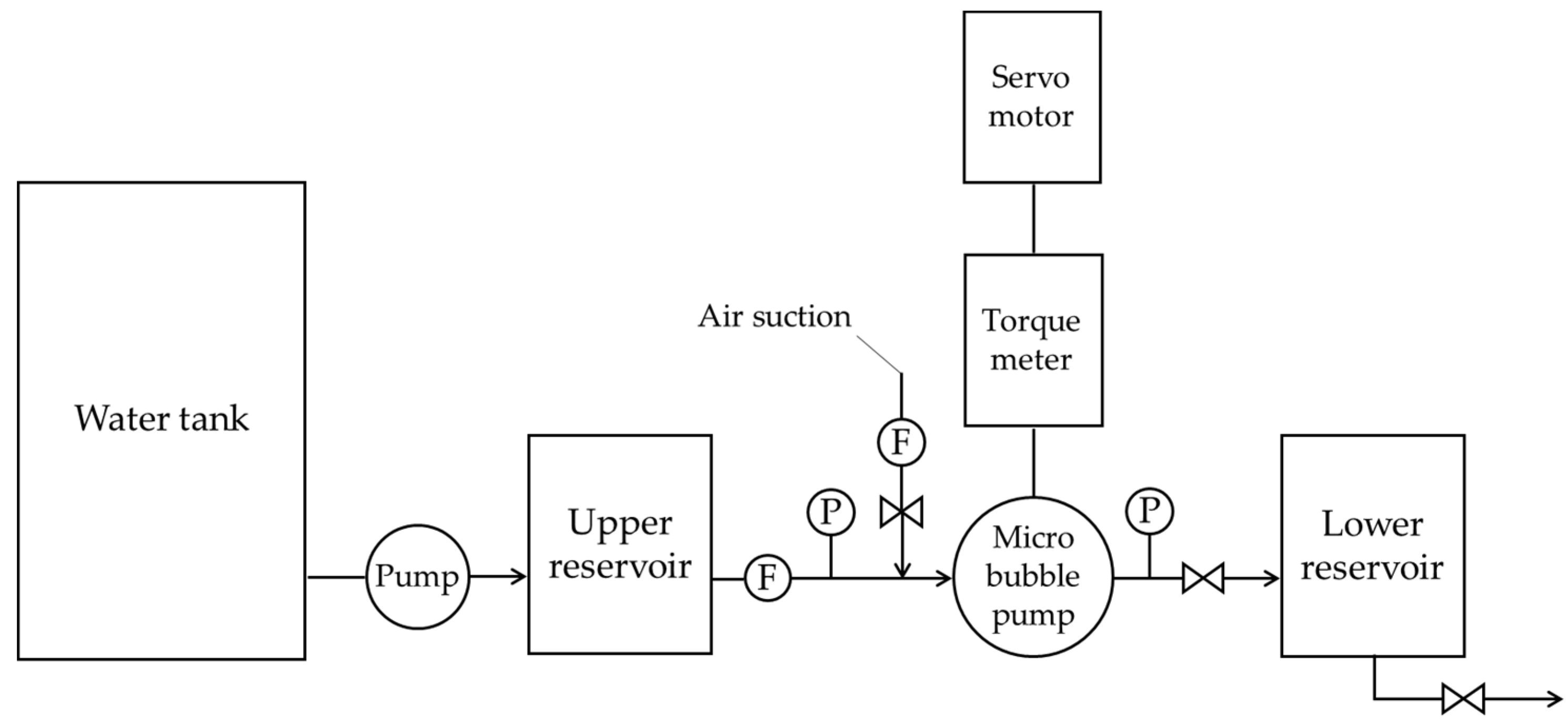

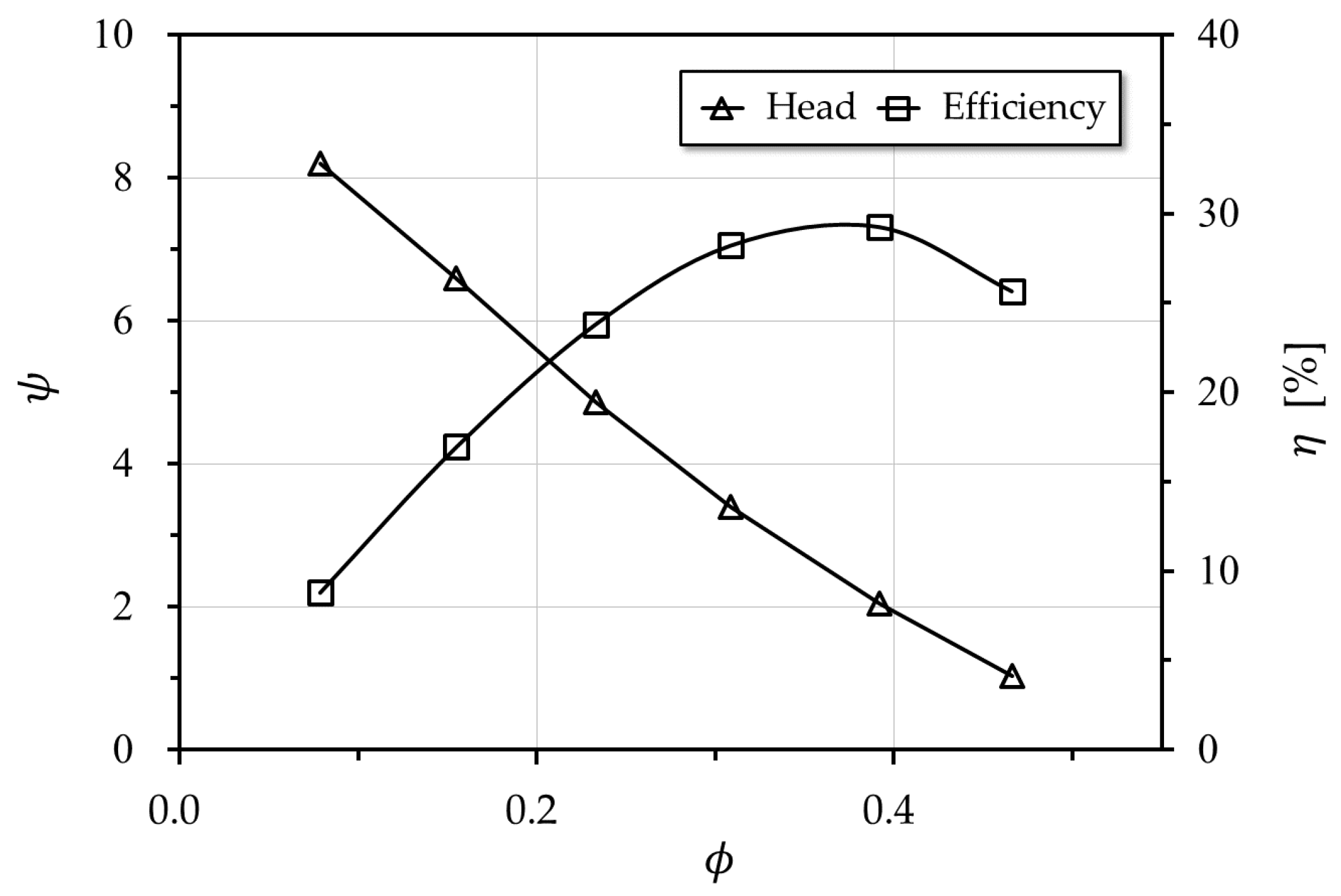
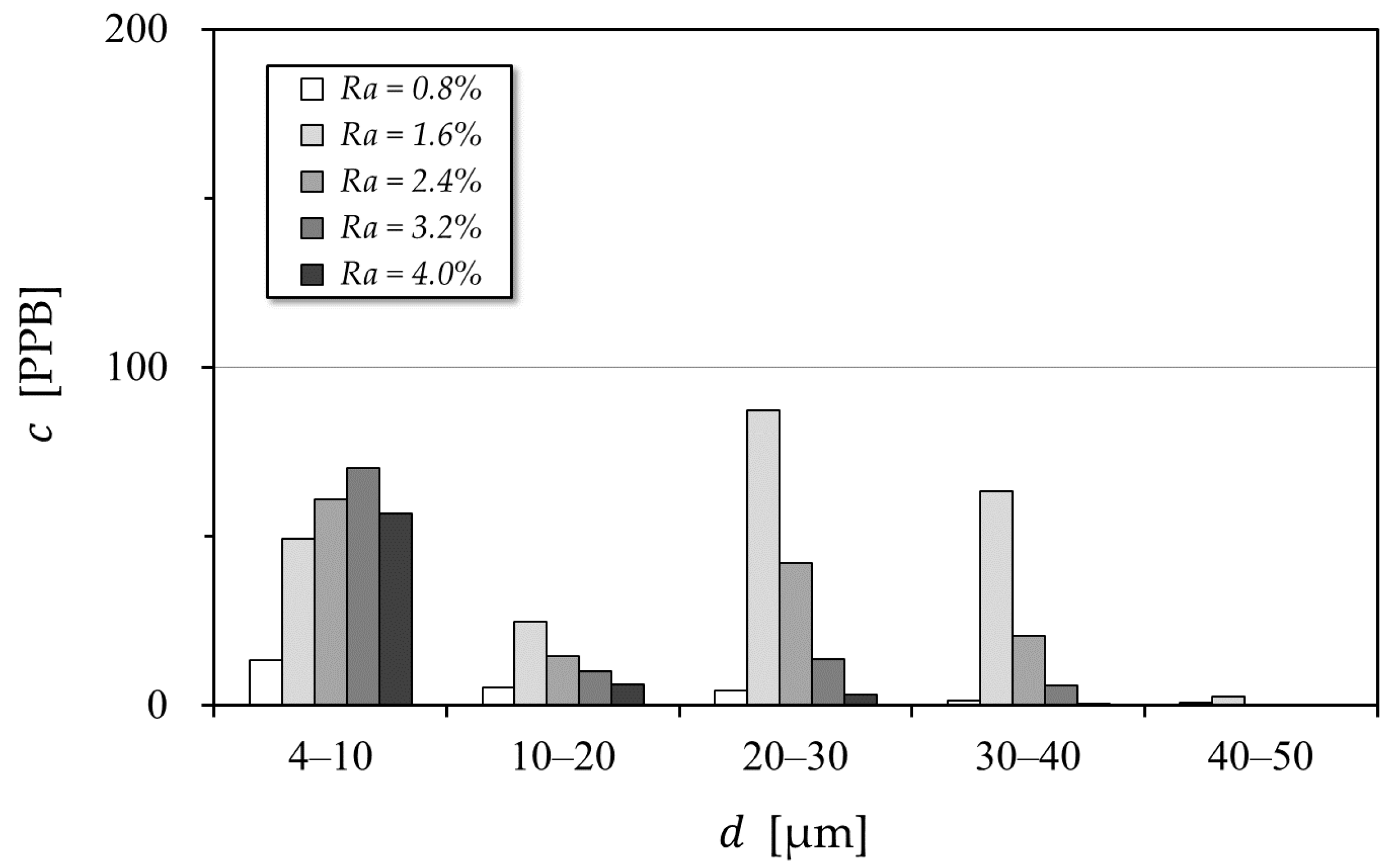
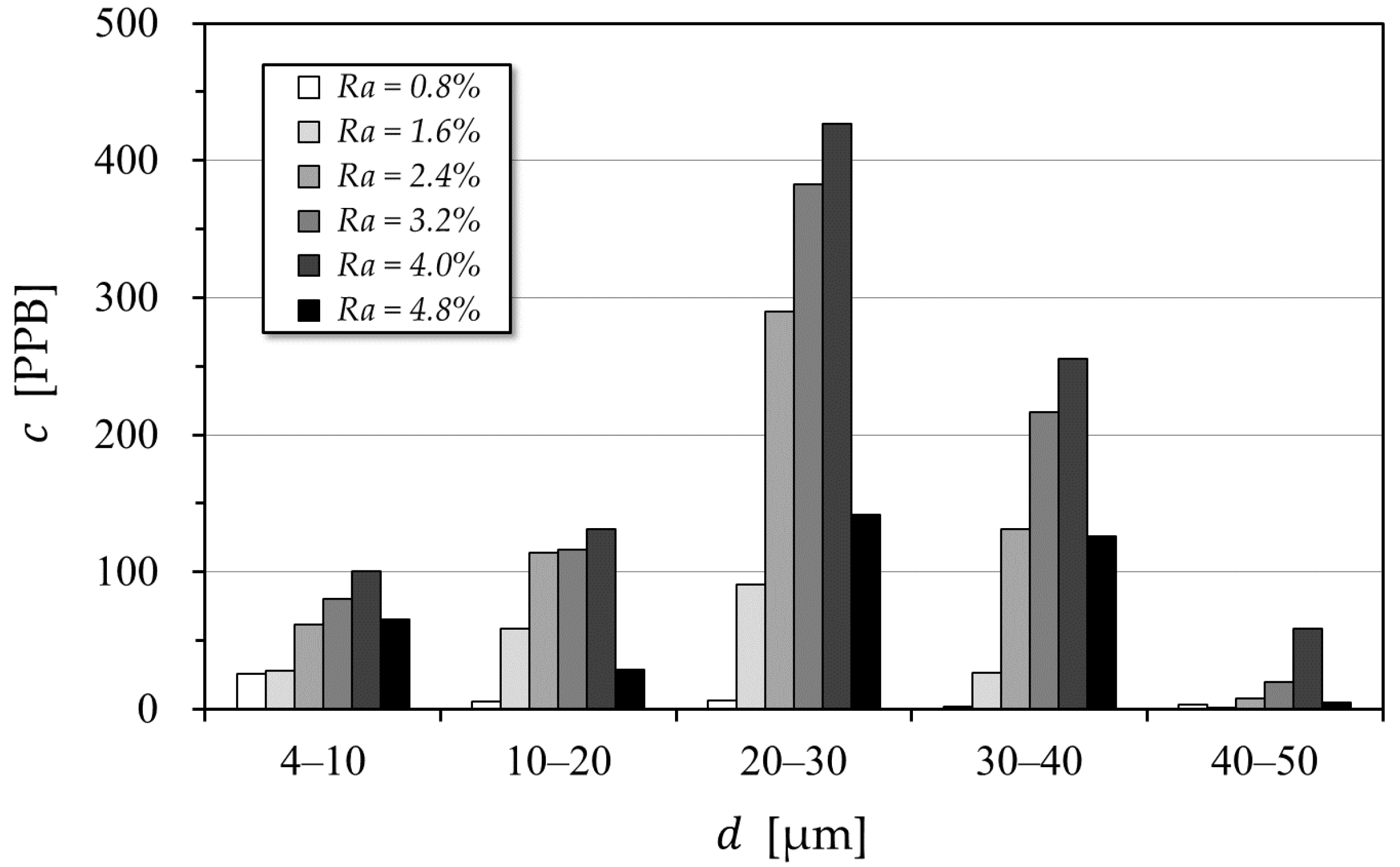
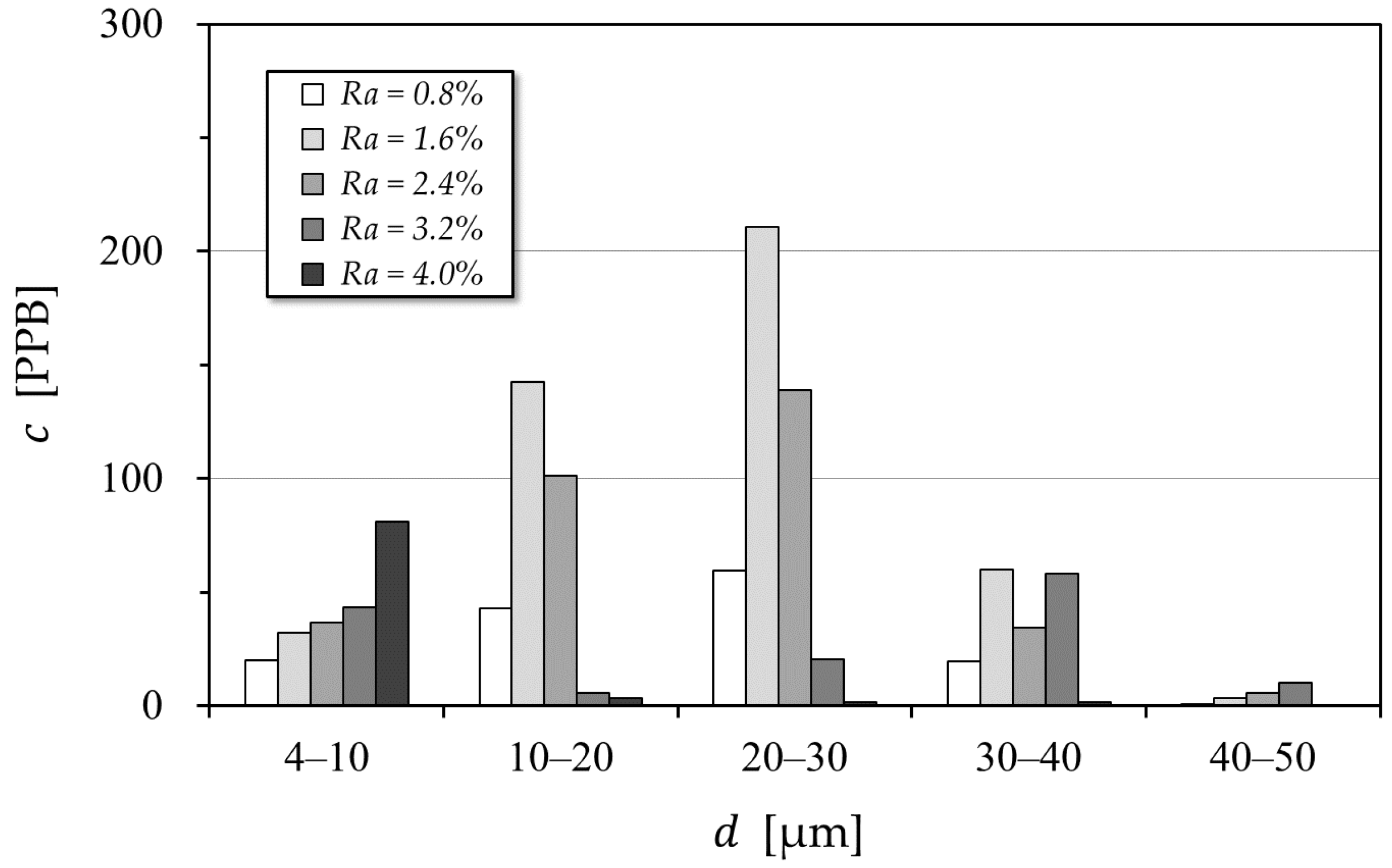
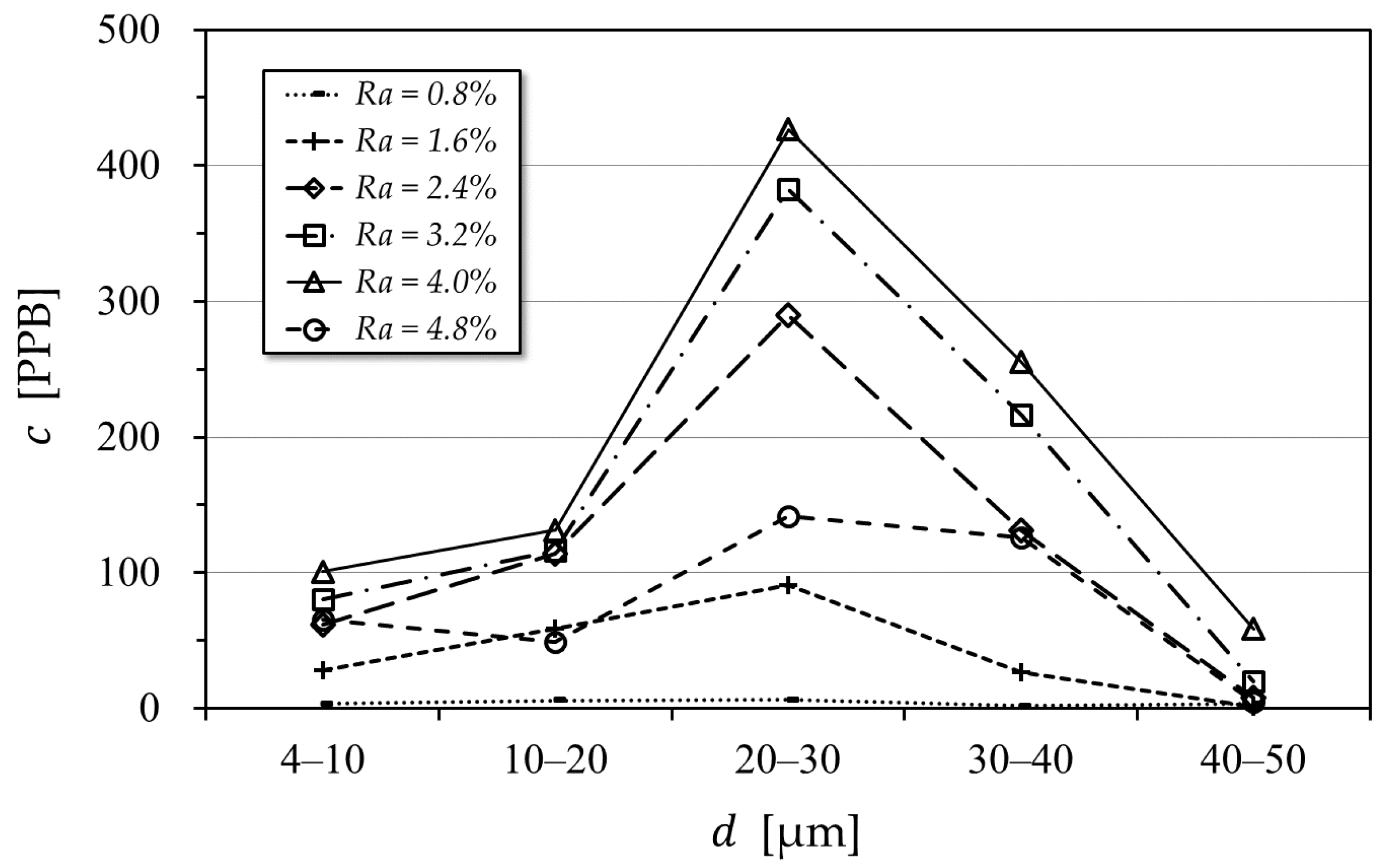

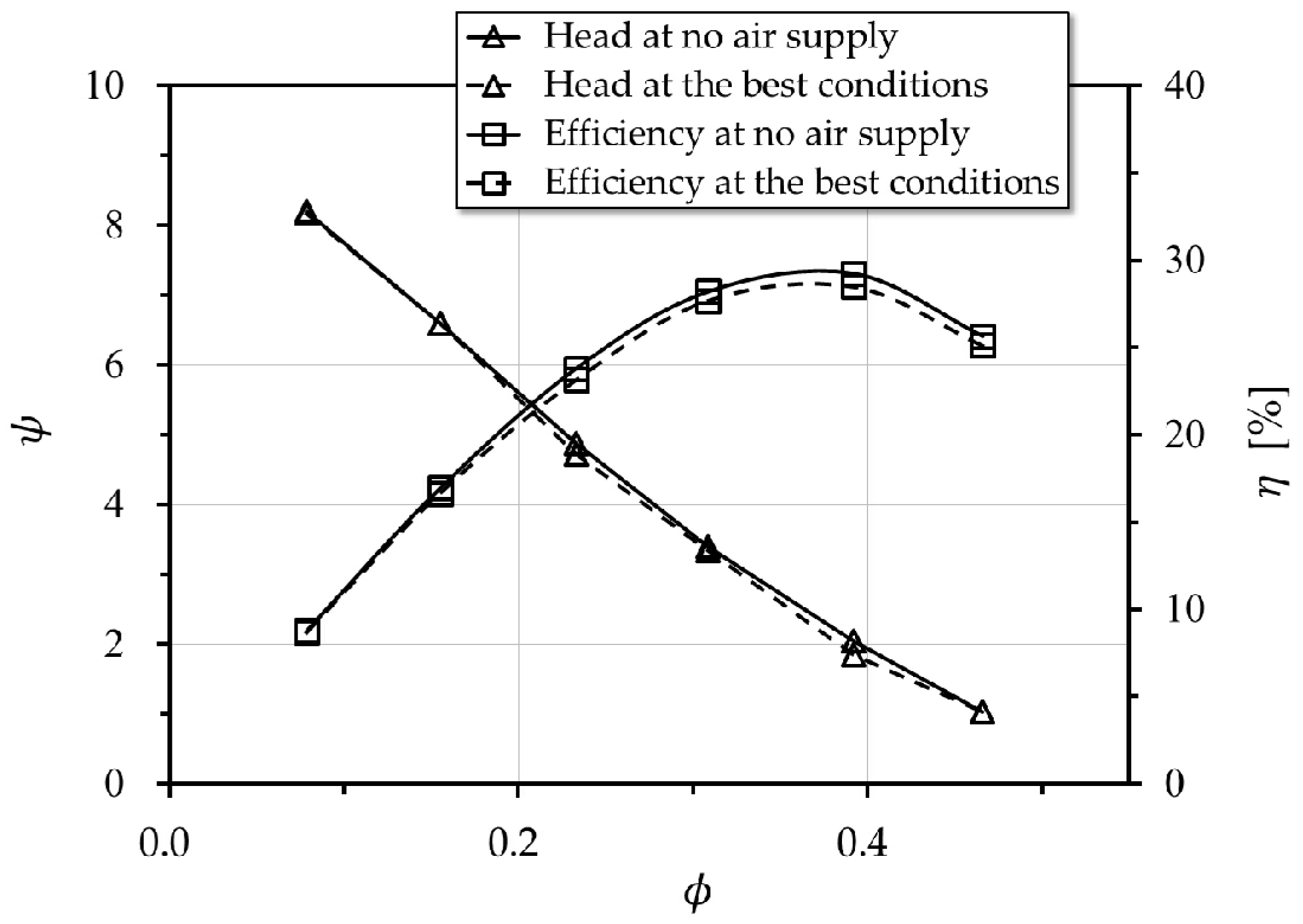

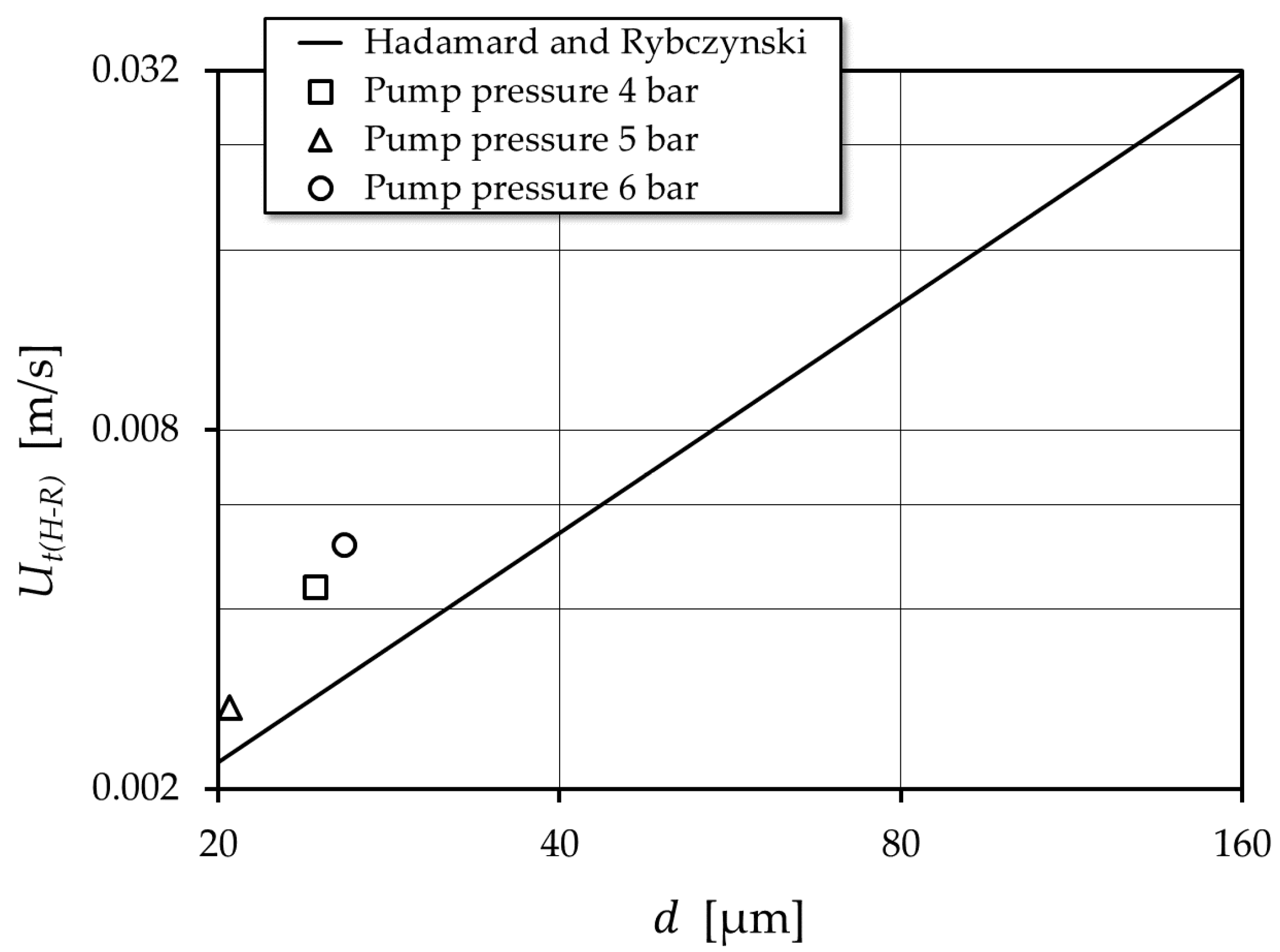
| Parameters | Value |
|---|---|
| Flow coefficient | 0.39 |
| Pressure coefficient | 2.04 |
| Rotational speed, rpm | 3550 |
| Diameter of impeller, mm | 72.6 |
| Number of impeller blades, ea | 48 |
| Variables | Value |
|---|---|
| Air Flowrate Ratio (Ra), % | 0.8–4.8 |
| Pump pressure, bar | 4–6 |
| Rotational speed of impeller, RPM | 3550 |
© 2018 by the authors. Licensee MDPI, Basel, Switzerland. This article is an open access article distributed under the terms and conditions of the Creative Commons Attribution (CC BY) license (http://creativecommons.org/licenses/by/4.0/).
Share and Cite
Jeon, S.-Y.; Yoon, J.-Y.; Jang, C.-M. Bubble Size and Bubble Concentration of a Microbubble Pump with Respect to Operating Conditions. Energies 2018, 11, 1864. https://doi.org/10.3390/en11071864
Jeon S-Y, Yoon J-Y, Jang C-M. Bubble Size and Bubble Concentration of a Microbubble Pump with Respect to Operating Conditions. Energies. 2018; 11(7):1864. https://doi.org/10.3390/en11071864
Chicago/Turabian StyleJeon, Seok-Yun, Joon-Yong Yoon, and Choon-Man Jang. 2018. "Bubble Size and Bubble Concentration of a Microbubble Pump with Respect to Operating Conditions" Energies 11, no. 7: 1864. https://doi.org/10.3390/en11071864
APA StyleJeon, S.-Y., Yoon, J.-Y., & Jang, C.-M. (2018). Bubble Size and Bubble Concentration of a Microbubble Pump with Respect to Operating Conditions. Energies, 11(7), 1864. https://doi.org/10.3390/en11071864





